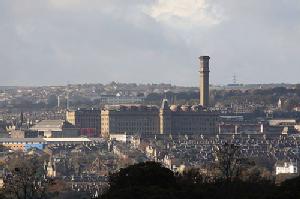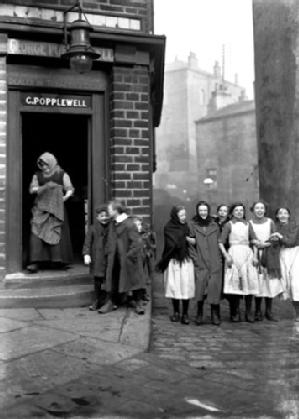Field Trip to Bradford
The field trip to Bradford is an opportunity to explore many aspects of the Victorian City. There will be site visits to Little Germany, Undercliffe Cemetery, Saltaire and Manningham Mills.
An annotated map of the visit may be found below.
View Bradford in a larger map
Students will be expected to lead the site visits and should annotate the maps below with their research findings from the field trip. In particular, they should focus on how characteristics of class and housing were represented in the various sites. For instructions on how to edit maps and web pages please click here.
Additional research resources include:
- Oxford Dictionary of National Biography
- Nineteenth-century British Newspapers
- The Times
- UK Census Collection
- Early maps (search for Bradford, Yorkshire)
Little Germany
View Little Germany in a larger map
See also:
Consider:
-
Size and layout of premises
-
Proximity of buildings to each other
-
Decoration and architectural style
-
Access to premises
-
Width of streets
-
Housing
Undercliffe Cemetery
See also:
Notable graves at Undercliffe Cemetery
Bradford Council Information Leaflet on the Undercliffe Conservation area ![]()
Consider the following:
-
Inscriptions - the positive identities portrayed (civic, family, district and occupational)
-
Grave architecture
-
Causes of death
-
Location of cemetery - note landscape of Victorian city - Bradford’s location in several valleys - housing etc.
Saltaire
View Saltaire in a larger map
See also:
- 1881 Census for Saltaire (Shipley, Yorkshire: Enumeration District 16)
- Saltaire - Visit Bradford site
- Saltaire - Saltaire Village site
Consider the following:
- Working environments
-
Class distinctions in housing
-
Zoning of village
-
Village facilities
Manningham Mills
Lister built Manningham to house the machinery he had invented to make silk, plushes and velvet after the original premises burnt down in 1871. The style was Italianate, the central feature was the chimney, 250 feet high weighing 8,000 tons. Lister was a multi-millionaire owning several valuable estates at Addingham Manningham, Horton and Bradford. He vacated his Bradford home, Manningham Hall in 1870 selling the buildings and grounds to Bradford Corporation for use as a park. It was named Lister Park and Lister later gave £50,000 towards the building of the Cartwright Memorial Hall (now an art gallery).
Manningham Mills is remembered as the site of a bitter strike which lasted from December 1890 to April 1891. It resulted in the company’s proposal to reduce wages for staff in the plush department because of the imposition of tariffs by the US. Lister refused to give in to demands by the workers who were locked out during a bitter winter. They were not supported by a strike fund. The spinners were the first to resume working and the remainder were forced back to work. The strike is regarded as a landmark in industrial relations history. Within a few months of the end of the strike, 10,000 West Riding textile workers had elected to become members of trade unions. The strike was also the impetus for the formation of the ILP at Bradford in 1893.
Back-to back housing as well as housing for the overlookers and other members of the petty bourgeoisie can be seen in the streets surrounding Manningham Mills. Back-to-backs were built in short rows or in blocks of four. They could not be through-ventilated and much medical opinion blamed the housing for the spread of disease because of the build-up of noxious vapours. Of course much of the disease was in fact caused by overcrowding, polluted water and inadequate hygiene. The back-to-backs however were built around tiny courtyards which the sun barely penetrated. They were cold and damp and the sight and smell of the privies were a few feet from the dwellings. They often contained cellar dwellings which were let separately. They had their backs against earth and were sunless, damp and gloomy. Some were built close to streams or below the main level of sewers which could then flood and ooze through the walls. The houses themselves were around 4 yards square in total and could house more than one family. A social reform report of 1845 for example noted a family of eight living in Bradford in just two rooms. A second example noted: ‘Four persons work in the upper apartment, in which a man and his wife sleep. They had to cease from work a week since whilst the woman was lying in [giving birth]. She now lies in the same bed exposed to their gaze. A dead child is laid in the same room’. The building of back-to-backs was outlawed by the 1909 Housing Act. The houses in the streets around Manningham are some of the last to be built.
Consider:
-
The contrast with Saltaire
-
The design of the factory
-
Housing conditions


Christopher Pratt
1910, Bradford, UK
These women passing Popplewell’s grocery shop on Seymour Street are dressed for work in a mill: in 1910 the wool industry was heavily dependent on female and child labour. Pratt was a Methodist industrialist who created a rich photographic record of Bradford life.
Photograph: Christopher Pratt/Tim Smith
